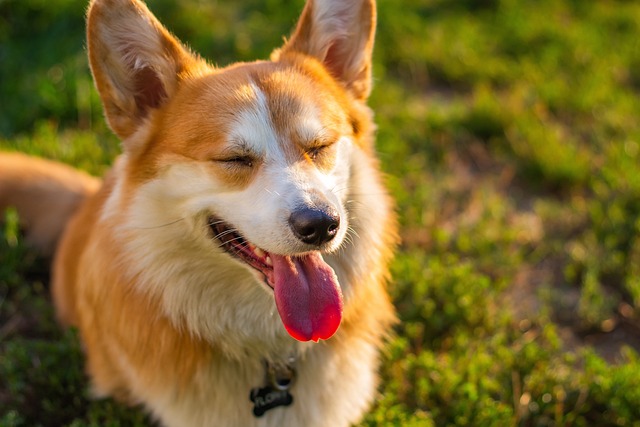
How can I tell if my dog's heatstroke is serious
Let’s be real: It’s a sticky August morning in Los Angeles, and you took your 2-year-old Golden Retriever, Max, for a walk a little later than usual
Imagine you’re in your Phoenix apartment, refilling your 1-year-old Corgi mix’s water bowl for the third time before 2 p.m.—the Arizona sun is streaming through the window, and she’s lapping so fast her ears flop. You start panicking: “What is considered drinking a lot of water for a dog?” For new U.S. dog owners, especially in warm states, this worry is common—but figuring out “too much” starts with knowing what’s normal, not just guessing.
First, let’s break down the basics: A healthy dog drinks about 0.5 to 1 ounce of water per pound of body weight daily. So a 25-pound Corgi should sip 12.5 to 25 ounces a day—roughly 1.5 to 3 cups. But “a lot” depends on context. If your pup ran around the community park for 20 minutes in 100°F heat, chugging an extra cup isn’t excessive—it’s her body cooling down. Dry kibble (most apartment dogs eat this) also makes her thirstier than wet food, since kibble is 10% water vs. 70% for wet. The red flag is unexplained excess: If she’s drinking 4+ cups a day without more exercise or a diet change, that could signal something off—like diabetes, kidney issues, or even a urinary tract infection. My neighbor’s 6-year-old Golden Retriever started drinking twice as much last year; turns out he had early-stage diabetes, and catching it early made treatment easier.

Here’s how to tell if it’s “too much” (and what to do): Grab a measuring cup and fill her bowl with a set amount—say, 2 cups (16 ounces)—in the morning. Note how much is left at night. Do this for 3 days to spot a pattern. Also, watch for other signs: Is she peeing more (like asking to go out 5+ times a day, even at night)? Is she tired or losing weight? For apartment living, put a second water bowl near her bed (on a tray to avoid stains—neighbors below will thank you!) and keep bowls out of direct sun (warm water is less appealing). If she’s nervous around new bowls, reward her with a tiny freeze-dried chicken treat when she sips from her regular one—positive reinforcement, per U.S. pet culture, beats scolding (which stresses her and makes her drink more out of anxiety, against ASPCA rules).
Don’t let water worries overshadow U.S. rules and manners. Every state, including Arizona, requires dogs over 4 months old to have a rabies vaccine—skipping this because you’re focused on water intake risks fines up to $250. If your pup’s excessive drinking leads to more potty trips, always carry biodegradable poop bags: Phoenix fines $100 for leaving waste behind, and it’s basic respect for your community. When walking her in the park, bring a portable water bowl (foldable ones fit in your leash pouch) but don’t let her beg from other dogs’ bowls—good etiquette keeps everyone calm. If you notice consistent excess, call your vet: Many U.S. pet insurance plans (like Healthy Paws) cover blood tests to check for issues like kidney disease, which is key to catching problems early.
At its core, “a lot” is about context—heat, diet, and activity matter. With a measuring cup, symptom checks, and adherence to local laws, you’ll know if her sipping is normal—or if it’s time to see the vet. No more guessing—just peace of mind.

Let’s be real: It’s a sticky August morning in Los Angeles, and you took your 2-year-old Golden Retriever, Max, for a walk a little later than usual

You're enjoying a summer afternoon at the park when you notice your dog has stopped panting and appears disoriented - their gums are bright red

Let’s paint the picture: You’re in your Denver apartment, watching your 4-year-old Boston Terrier, Ruby, plop down mid-play session with her favorite toy

Many dog owners notice their pets nails seem shorter after regular walks,but how much does this daily activity actually help?The answer depends on where you walk—concrete sidewalks or asphalt streets gently file nails as a dog's paws hit the ground

Most dog owners notice their pup scooting across the carpet at some point, but few connect it to impacted anal glands. These small sacs near a dog’s rectum secrete a scent for marking territory

Most vets agree that regular dog teeth cleaning is key to avoiding painful dental issues later. For healthy adult dogs, a professional cleaning at the vet’s office every 12 to 18 months usually works well.